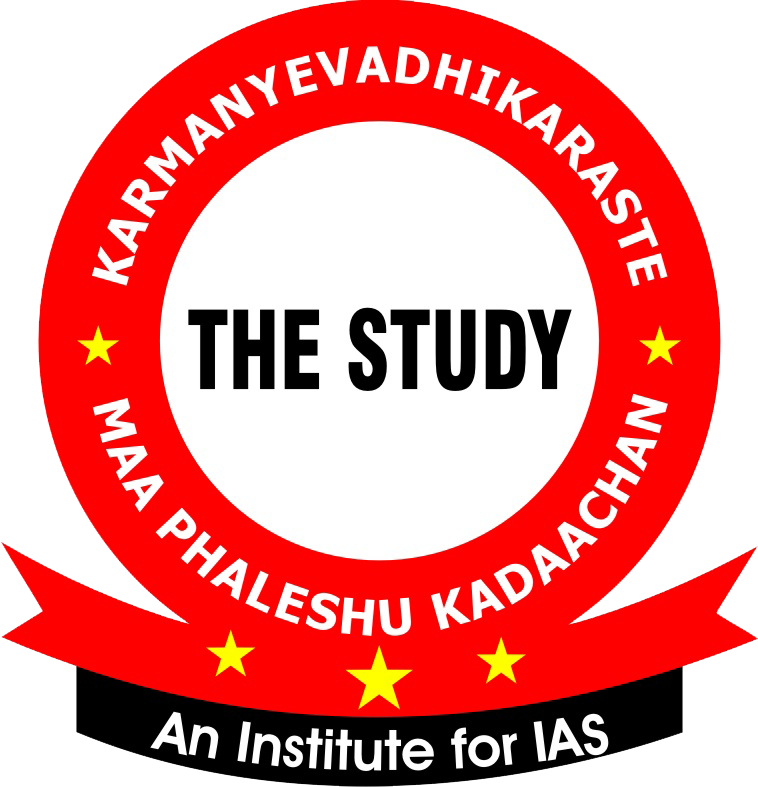June 23, 2023
Finance Summit, Reservation in Assam, Groundwater Extraction
FINANCE SUMMIT: A New Global Financing Pact
Why in the News?
- According to French President Emmanuel Macron, it’s time to take concrete steps for sustainable finance to increase “financial solidarity with the Global South”.
- India, currently holding the G20 presidency, assumes the role of co-chairing the steering committee of the summit alongside France. As such, India can be relied upon to represent the voice of the Global South.
Promises and Financing
- The cost of climate change and inaction is increasing daily, especially for low- and middle-income countries, which are most vulnerable to its impacts.
- One Planet Lab's white papers for the Summit highlight the need for a substantial investment of $4 trillion annually to achieve global and national objectives, such as the United Nations SDGs, climate COP21, and Biodiversity COP15..
- Specifically, more than $2 trillion annually is needed to achieve the goals set by the Paris Agreement, while another $2 trillion is necessary for fulfilling the UN SDGs.
Drawbacks
- The gap between promises and payment highlights the unpredictability and poor structure of international funding, failing to address the liquidity challenges of developing countries. Only $204 billion of official development assistance was received last year to address climate change.
- South Asia, Latin America, and Africa, regions with high vulnerability, receive only 25% of global climate investment.
- Global funds impose conditions that restrict fiscal autonomy before providing financial assistance, contributing to institutional weaknesses, illicit finance flows, and higher risk perceptions in developing countries.
- Limited public funds are utilized by developing countries to finance their own development transitions due to inadequate returns and perceived risks in low- and middle-income countries.
Critical components
- The finance summit is set in a significant year, coinciding with key events like World Bank reforms, India's G20 presidency, the UN's SDG Summit, the UN Secretary-General's Climate Ambition Summit, and COP28.
- The success of the summit lies in its potential to drive the transformation of international financial and development systems. The summit must encompass three essential elements: Pact, Platform, and Pathway.
Necessity
- First To create a pact for global flows of finance that covers two levels of social contracts i.e., domestic and international.
At the domestic level, high debt limits the fiscal space of developing countries.
- To expand the scope for developing countries, it is necessary to modernize and standardize current tax systems, take strong measures against illicit cross-border financial activities, strengthen tax administrations, and reduce ineffective subsidies on fossil fuels.
- These efforts must be accompanied by proportionate taxation of actors and goods involved in emissions-intensive global flows.
International level
- Finance is crucial for both adaptation and addressing the loss and damage caused by climate change. Thus, the international social contract should be built upon a robust framework of global solidarity rather than mere empty promises.
- New resources can be mobilized by leveraging global flows, including through taxes imposed on the production of fossil fuels, shipping of goods, and transportation of fossil fuels. For instance, levying a tax of just one dollar on each barrel of oil could generate approximately $30 billion annually.
(b) Second
- To create a global platform to de-risk finance and mobilise large volumes of private investment in sustainable infrastructure.
- Vulnerable countries need diverse forms of blended finance to facilitate their shift towards renewable energy, adoption of clean technologies for sustainable livelihoods, and transition away from fossil fuels. To meet these financing requirements, the utilization of a Global Clean Investment Risk Mitigation Mechanism can be instrumental.
- It is crucial to address the risks associated with currency fluctuations, which can escalate financing expenses. Bridging the psychological and financial gaps can be achieved through enhanced transparency and real-time data availability.
Deliverables are the quantifiable goods or services that need to be provided at various stages of a project as well as at the end of a project.
Deliverables help keep projects on course and allow for the efficient allocation of time and money.
(c) Third– Preparation of political pathway.
- The creation of time-bound deliverables on climate finance, spanning from one summit to another.
- The summit must outline the maths of finance, the mechanisms of delivery, and establish the momentum for real investment over the next two years.
RESERVATION IN ASSAM
Why in the News?
- The Election Commission has released the draft delimitation proposal for Assam, which maintains the existing number of Assembly and Lok Sabha seats. However, there is an increase in the number of Assembly seats reserved for the Scheduled Castes and Scheduled Tribes.
- After publishing the draft delimitation proposal, the Election Commission has also sought suggestions and objections related to it by July 11.
About Delimitation :
- The literal meaning of delimitation is the action or process of delimiting territorial constituencies with legislative bodies in a country or province. The work of delimitation is entrusted to a high powered body. Such a body is known as the Delimitation Commission.
- The Delimitation Commission's task is to redraw the boundaries of all Lok Sabha and Vidhan Sabha constituencies in India on the basis of the most recent census. Re-fixation of boundaries involves keeping the representation of different states unchanged i.e. no change in the number of representatives.
Draft delimitation proposal
- According to the Election Commission, the delimitation process in Assam has considered the 2001 census figures, resulting in a total of 126 assembly seats and 14 Lok Sabha seats for the state.
- In the draft proposal, there is an increase in the number of Assembly seats reserved for the Scheduled Tribes (STs) from 16 to 19, and for the Scheduled Castes (SCs) from 8 to 9.
- Specifically, the autonomous Bodoland Territorial Region will see an increase of three Assembly seats, bringing the total to 19. Additionally, the hilly West Karbi Anglong district will gain an additional Assembly constituency.
- While the number of Lok Sabha seats remains unchanged, there is a proposal to name one constituency after Kaziranga.
Divided on 2001 census
- The commission attempted to "change the demographic pattern" in the State with some districts registering a low population growth and some abnormally high.
- According to the Commission, the low population growth districts should not be put to disadvantage and the number of seats in these districts should not be reduced.
- A proposal was put forward to allow a 25% variation from the standard norms in order to prevent any social group from feeling excluded due to insufficient representation.
- During the delimitation exercise, the diverse geographical features in Assam will be taken into account.
How Delimitation is carried out in India?
- The current process of delimitation of parliamentary constituencies in India is conducted in accordance with the provisions of the Delimitation Act, 2002, which utilizes data from the 2001 census.
- According to Article 82 of the Constitution, following each census, the Parliament passes a Delimitation Act as per law. Once the Act is implemented, the Central Government forms the Delimitation Commission. This Commission is responsible for delineating the boundaries of parliamentary constituencies, adhering to the provisions outlined in the Delimitation Act.
Groundwater extraction has affected the Earth’s rotation
Why in the News?
- A recent study has revealed that the continuous extraction of groundwater has caused the Earth's axis to tilt approximately 80 cm to the east, indicating that human groundwater extraction has affected the planet's rotation.
- The study also found that a significant amount of groundwater, around 2,150 billion tonnes, has been pumped and drained into the oceans between 1993 and 2010, making it a notable contributor to global sea-level rise.
- Scientists have long known that the movement of water can impact the Earth's rotation, as demonstrated in a 2016 study that showed how water movement worldwide contributed to the wobbling of the planet's axis.
- The Earth's axis experiences a wobbling effect, similar to a spinning top, resulting in the shifting of its rotational pole in a circular pattern of several meters each year. Various factors, including weather, seasonal changes, the molten core, and powerful hurricanes, contribute to this phenomenon.
- Recent studies have allowed scientists to track this motion in relation to astronomical events such as the centers of bright galaxies or quasars, but the role of groundwater had not been previously considered.
- To address this gap, a group of scientists at Seoul National University utilized a climate model that connected the Earth's axis shift with the movement of water from melting ice caps and glaciers.
- The study incorporated the effects of water stored in reservoirs and dams but found no significant match with the observed axis drift.
- It was discovered that pumping groundwater from midlatitude areas had the most significant impact on the axis drift. The highest amount of groundwater redistribution occurred in northwest India and western North America, both located at mid-latitudes.
- The extraction of groundwater from underground reservoirs or aquifers has contributed to a global sea-level rise of 6.24 mm between 1993 and 2010.
What is the rotation speed of the earth?
- The Earth completes one rotation every 23 hours, 56 minutes, and 4 seconds, resulting in a day and night cycle. The speed of Earth's rotation is approximately 1674 kilometers per hour. The continuity of rotation and revolution is the primary reason why we may not perceive the Earth's rotation speed in our daily lives.
- The Earth rotates around its rotational pole, which is located on its axis of rotation. This rotational pole undergoes a movement known as polar motion.
- Numerous pieces of evidence support the Earth's rotation and revolution, such as the presence of day and night cycles caused by the Earth's rotation on its axis. If the Earth did not rotate on its axis, one side would always experience daylight while the other side would be in perpetual darkness.
India’s Condition
- Groundwater depletion has become a significant concern in India over the past decade.
- Around 95% of India's groundwater depletion is concentrated in north India, where groundwater is primarily utilized for irrigation purposes.
- Punjab, Haryana, Delhi, and western Uttar Pradesh are regions facing critical groundwater levels due to the unrestricted extraction of groundwater.
- Rajasthan and Gujarat experience low groundwater levels due to their arid climate.
- Certain areas in Karnataka, Tamil Nadu, Telangana, and Andhra Pradesh also face low groundwater availability due to the presence of crystalline aquifers.
******

